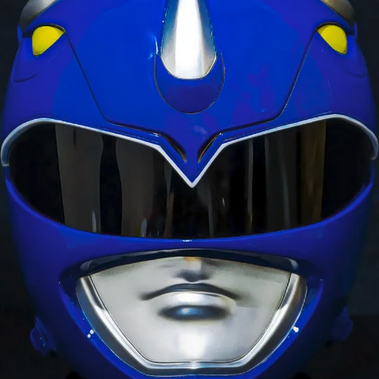
Refrigerator

The problem is that cold is merely the absence of heat, you can’t inject cold into something or generate cold, because there is no such thing as cold. It’s kind of like how we can make a light bulb, but we can’t make a dark bulb.

Maybe we could start manufacturing mini black holes to build the dark bulbs!

That’s the best explanation I have seen for heat.
I’ve ran equations for heat so I get it more than most, but always found it difficult to explain.

All you need to do, is figure out a way to use electro magnetic radiation to slow down particles.
It’s just a small technical challenge.

From these 2 sentences, I have written a 52 pages PowerPoint presentation to get funds from Wall Street.
I expect to find ~$2 bn.
See you in jail!

Hah! My ChatGPT bot did 60 slides in 90 seconds, and submitted it hours before yours. See YOU in court!

Hah! Jokes on both of you, I submitted a super generic patent for “cold microwave” YEARS ago to leech off of anyone who manages to actually invent this technology in my lifetime. See you BOTH in court (and probably also jail)!

Calm down there Elizabeth Holmes

Technically that’s already a thing. It is pretty expensive compared to a normal refrigerator though…

Easy, just invert the polarity of the microwaves

if you see a dark area you can turn on a flashlight to emit light towards the area and make it not-dark.
If you see a lit area and you want it unlit, there is no anti-flashlight you can point towards it to suck the light out.
Similar kind of thing, heat can only be given, not taken. heating stuff up is easy, but for cooling the best you can do in most cases is to make it easier for the thing to give you its heat (ex by the atmosphere colder), but you can’t force it.

This is fundamentally not true.
Light is made of electromagnetic waves. If you can control the timing of those waves precisely enough, you can add another light with the opposite phase (an inverted wave) that will cancel out the other light.
This is what happens in the famous “double slit experiment”. It’s also the same principal as noise cancelling headphones albeit with sound pressure waves instead of EM waves.
Scientists have actually cooled atoms very close to absolute zero by shining a laser at them

I said “in most cases”. I am aware that it is possible. We’re looking at a macroscopic system here though. A microwave, not a couple of atoms in a lab. good luck cooling a couple of atoms in the center of an opaque blob of food with a laser
I completely agree with your third point where you said “in most cases”.
It was your first two points trying to create an analogy with light that I was responding to

It’s called a freezer and it just takes a bit longer.

In reductively simple terms heat is really easy to generate. In fact pretty much everything we do creates extra heat entirely on accident, so a device than make things hot on purpose is actually surprisingly simple. It’s much harder to get rid of. The only economical way we’ve found of managing it is by using to phase change of refrigerants to pump it out of enclosed spaces, which is how refrigerators and air conditioners currently work. Everything else would be more complex, less efficient, or both. So if such a thing is even possible it would almost certainly be much more expensive
There’s something called blast freezer, which is basically a freezer with fans inside, like what convection ovens have. It cools down food much faster than a standard freezer.

It’s on my list when I have fuck you money. Next to a pacojet

The pacojet is way expensive, also, the pacojet patents runned off and now there exists way cheaper alternatives that work in the same way. Check out the NinjaCream.

I did but I really want the pacojet :)

Basically like a blast furnace right?

We have that, it’s called a fridge, and then there’s a freezer for making things frozen.

But a fridge is the opposite of an oven. Some kind of flash freezing would be like the unmicrowave.

The reason we shrink heating devices down but not cooling devices is a combined consequence of economics and the laws of thermodynamics.
First an analogy: Making a boat that moves downstream a river is easy. Take any buoyant material like a log or a branch and drop it in water. Presto, you’ve got a mode of transportation of any size. Want to go upstream? Now you need motors to fight the current. Putting a motor on a large piece of wood, (a boat) is economically viable. Putting one on thousands of sticks? Ain’t nobody got time for that.
As a consequence of the laws of thermodynamics, the the universe naturally converts all potential energy (fuel, electricity) into heat. The universe will do this basically on its own, over time, constantly. This is called entropy.
Doing the reverse, taking heat and putting it back into potential energy, i.e. cooling, is difficult. You basically have to pay a price to the universe in some other way, kind of like how a motorboat has to push more water downstream than the current would have naturally moved on it’s own. This is what heat pumps (AC, fridge) do. Heat pumps put some of that heat back into potential energy, in exchange for also releasing potential energy into heat… The trick here is to do these two things in different places. The fridge’s motor converts some electrical energy into heat in exchange for being able to move some of the heat in the fridge outside of the fridge. The consequence of this is that the room the fridge is in is now hotter. Mostly because you took the heat in the fridge and moved it into the room, but also because the fridge’s motor also added some MORE heat to the room in the process in order to fight entropy. So to actually make this useful, you need to insulate what you are cooling (or it will just get warm again, warmer than it was before, because you added heat to the room), and you also want to dispose of the heat in the room. So you pump that out into the atmosphere…
Anyway, long story short, you need insulation, refrigerant, motors, heat changers, lots of power to fight the universe’s tendency to spread heat everywhere. Technically you could miniaturize these things, but they become less efficient as you shrink them down, to the point where things smaller than a fridge are just not practical to make compared to the benefit you get from having them.
Making small heating devices is easy. You don’t need to fight the universe. You just need an apparatus that will “go with the flow”.

Liquid nitrogen

Well, it does exist, it’s called laser cooling, but it’s only if you want to have things really cold

You should try to build a chamber that sprays liquid nitrogen or other cryogenic liquids at the food.
Idk, good luck.

I believe that the problem with this method is that the nitrogen will expand in contact with the hot object, and this being a chamber means that there’s risk of explosion.

Yea, but it’d be a really cool explosion.
I’ll see myself out.

Win win in my book.

This is technically possible. The cosmic microwave background, i.e. space, is extremely cold (barely above absolute zero) so it basically acts as a heatsink you can pump infinite amounts of heat into. It turns out that if you can make the food radiate heat out into space and prevent it from absorbing more heat from sunlight, it’s possible to cool it below ambient temperature. This is also a completely passive process so it requires no electricity or other form of active energy input.
The problem with this is that doing it with food might be impossible. At the moment, we can only really do it using objects with special coatings that have been optimized for this purpose.
Here’s a couple interesting videos that explain how it works:

Put a heat sink into your scrambled eggs

It’s a lot easier to generate heat from electricity than to transfer them out. Closest bet would be just blasting cold air but heat transfer will be slow so it’s still quite limited.

Just invert the microwave!
:p

Cold doesn’t exist, it is merely the absence of heat. Easier to insert heat than remove it, same reason why you can put on warmer clothes in the winter, but you can’t make yourself cold in the summer.

‘projecting’ energy is kinda easy… ‘sucking’ energy is difficult
